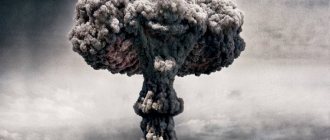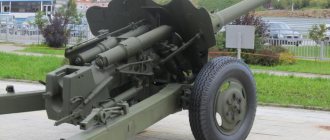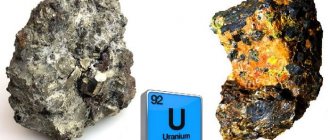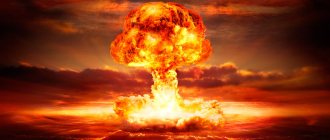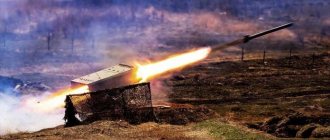In the middle of the last century, Americans first used atomic bombs against Japan. Since then the world has become different. There is a real danger of the destruction of our civilization. The world's major powers began to stockpile nuclear bombs in their arsenals. Politicians have a new term: nuclear deterrence.
Today, nuclear weapons stockpiles have become so dangerous that people around the world are talking about the need for nuclear disarmament. And although nuclear weapons were never used again in a real war, the creation and testing of atomic bombs continues to this day. This article examines the ten most powerful nuclear bombs in the world.
Ivy Mike (12 megatons)
Tests of this device have shown that "Ivy Mike" ranks fourth on our list of the most powerful nuclear bombs in the world. This is the first test of a new type of bomb based on the principle of thermonuclear fusion.
This alarming 12 megaton product completely destroyed the island of Elugelab, resulting in a 37 km high mushroom. The size of the hat was estimated at 160 km. For the first time, large quantities of enstinium and fermium were discovered in a two-kilometer-deep, 50-meter-deep crater that remains on the site of the island.
A documentary filmed during the trial was shown on television.
Little boy (18 kilotons)
Americans cynically call this bomb "baby" or "baby". Its 18 kiloton throughput puts it 10th on our list. It was this type of ammunition that was used in Hiroshima at the end of the last world war.
The length of this deadly device is only 3 meters with a diameter of about 70 cm. During the explosion of the Baby, a “mushroom” more than 6 kilometers high was formed. Then the Japanese city was wiped off the face of the earth. 140,000 civilians died.
Fat Man (21 kilotons)
The “fat man” took ninth place in the ranking of the most powerful nuclear bombs in the world. This is how the name is translated from English. Fat Man USA was used in Nagasaki. The power of the “fat man” exceeds the power of the “baby” by 3 kilotons.
A bomb exploded in the sky over a defenseless Japanese city, killing 80,000 civilians. The effects of radiation sickness are still evident in descendants of nuclear bomb victims. This was the second and last explosion of a nuclear bomb used for real combat purposes in human history.
INTERESTING TOP 10 longest bridges in China
Castle Romeo (11 megatons)
In 1954, the United States began a series of nuclear tests as part of Project Castle. It was then that America's most powerful atomic bombs were created and tested. In March of the same year, a new Romeo bomb with a yield of 11 megatons of similar TNT was tested. This energy release rate allowed it to take fifth place among the largest atomic bombs in the world.
INTERESTING TOP 10 Best books by Dostoevsky
This destructive product was detonated on a barge on the high seas. The United States simply no longer has islands to test nuclear weapons on. The explosion destroyed all life within a radius of 2 square meters.
Castle Bravo (15 megatons)
The cylindrical device, weighing 10 tons and measuring about 5 meters in length, became the second nuclear weapon in the United States and in the world. The bomb was designed so that it could be transported by plane.
Testing within the Castle project began with this product. In March 1954, a bomb was detonated in the long-suffering area of Bikini Atoll. The height of the nuclear mushroom was 40 km, and the diameter of the cap reached 100 km. The energy released by the device during the explosion was twice the calculated power. Experts estimated it at 15 megatons. The consequences of the explosion and subsequent radioactive contamination were terrifying. A two-kilometer crater remained at the bottom of the sea. Scientists who witnessed the tests on Rongerik Atoll, 240 kilometers from the explosion, had to be urgently evacuated.
INTERESTING TOP 10 The most famous paintings of the world
Ships from many countries were exposed to radioactive contamination, which caused a negative reaction from the international community. After this test, international law was revised to ensure safety during nuclear testing.
Castle Yankee (13.5 megatons)
At that time, the United States dreamed of creating a small bomb, but with great power. As part of a series of Castle tests, a prototype of such a device was created. It was called Yankee Castle. After testing, it turned out that the power of the explosion was more than 13 megatons. This made Castle Yankee the third most powerful nuclear bomb in the world.
The Yankee Castle was the second most powerful bomb produced and tested in the United States.
A nuclear mushroom with a height of more than 40 km and a cap diameter of more than 16 km created a cloud of radiation that reached the capital of Mexico in 4 days.
Rhea (955 kilotons)
The French also persistently tried to take their place in the nuclear club of world powers. Having achieved this, France tested Rhea, whose TNT equivalent yield was 955 kilotons. This figure allowed it to take sixth place in our ranking of the most powerful nuclear bombs.
At their test site located on the Mururoa Atoll, the French tested more than 200 atomic devices. The atoll turned into a lifeless island. The last test on it was carried out in 1998.
Trinity (21 kilotons)
The Americans were the first in the world to test this bomb, called the “little thing.” Its power of 21 kilotons allowed it to take eighth place in our ranking of nuclear explosions. When the “thing” exploded, the nuclear mushroom rose 11 kilometers. The destruction caused by the test stunned scientists.
At the site of the explosion, a new mineral was obtained for the first time: trinitite, formed as a result of the melting of quartz and feldspar.
Baker (23 kilotons)
With a yield of 23 kilotons of TNT, this weapon ranks seventh on our list of the most powerful nuclear explosions.
The bomb was created as part of the Crossroads project, an intersection just after Trinity. It was detonated in June 1946 in the area of Bikini Atoll, whose inhabitants had previously been evacuated.
This was the first test of an atomic bomb at sea. The main goal was to determine the damage caused to ships by a nuclear explosion. After the explosion, which occurred at a depth of 27 meters, a nuclear mushroom half a kilometer in size was formed. About 2 million tons of sea water rose into the atmosphere.
After the test, residence on Bikini Atoll was prohibited due to radioactive contamination.
The danger of nuclear war and nuclear disasters
Appearing in the midst of the worst war of the twentieth century, nuclear weapons became the greatest danger to humanity. Immediately after World War II, the Cold War began, which several times almost escalated into a full-fledged nuclear conflict. The threat of the use of nuclear bombs and missiles by at least one side began to be discussed back in the 1950s.
Everyone understood and understands that there can be no winners in this war.
To contain it, efforts have been and are being made by many scientists and politicians. The University of Chicago, using the input of visiting nuclear scientists, including Nobel laureates, sets the Doomsday Clock a few minutes before midnight. Midnight signifies a nuclear cataclysm, the beginning of a new World War and the destruction of the old world. Over the years, the clock hands fluctuated from 17 to 2 minutes to midnight.
There are also several known major accidents that occurred at nuclear power plants. These disasters have an indirect relation to weapons; nuclear power plants are still different from nuclear bombs, but they perfectly demonstrate the results of using the atom for military purposes. The largest of them:
- 1957, Kyshtym accident, due to a failure in the storage system, an explosion occurred near Kyshtym;
- 1957, Britain, in the north-west of England, security checks were not carried out;
- 1979, USA, due to an untimely detected leak, an explosion and release from a nuclear power plant occurred;
- 1986, tragedy in Chernobyl, explosion of the 4th power unit;
- 2011, accident at the Fukushima station, Japan.
Each of these tragedies left a heavy mark on the fate of hundreds of thousands of people and turned entire areas into non-residential zones with special control.
There were incidents that almost cost the start of a nuclear disaster. Soviet nuclear submarines have repeatedly had reactor-related accidents on board. The Americans dropped a Superfortress bomber with two Mark 39 nuclear bombs on board, with a yield of 3.8 megatons. But the activated “safety system” did not allow the charges to detonate and a disaster was avoided.



